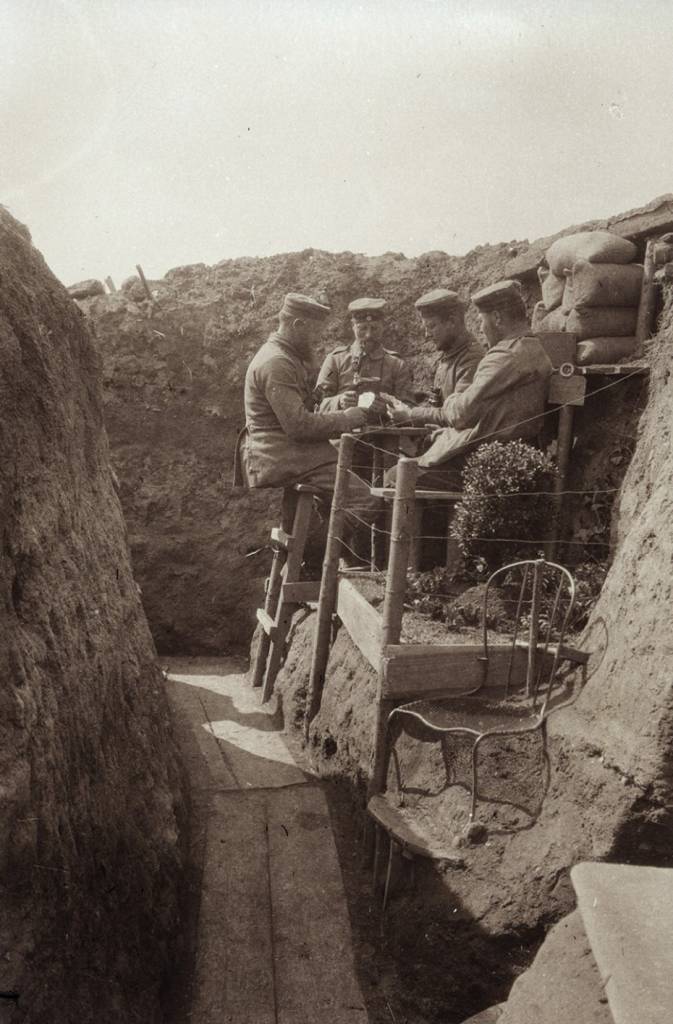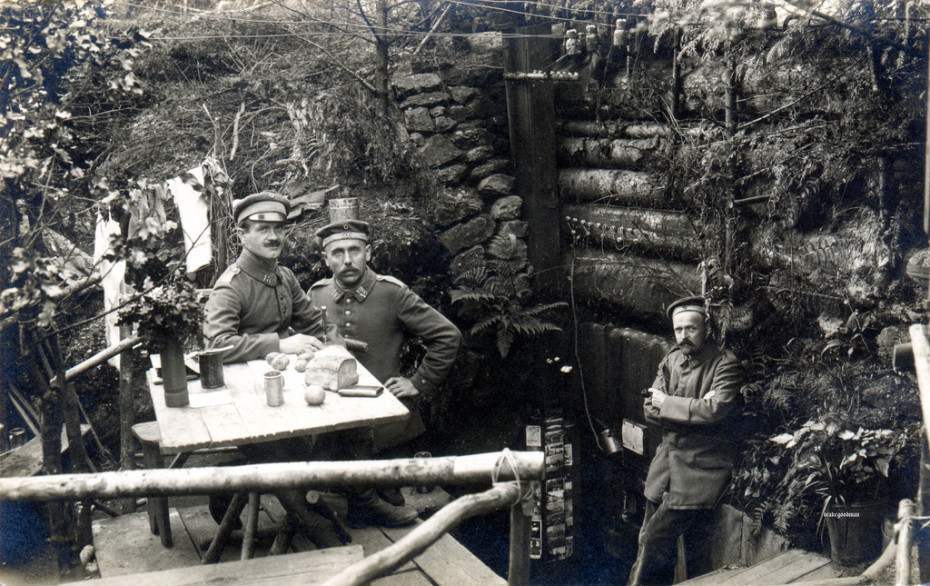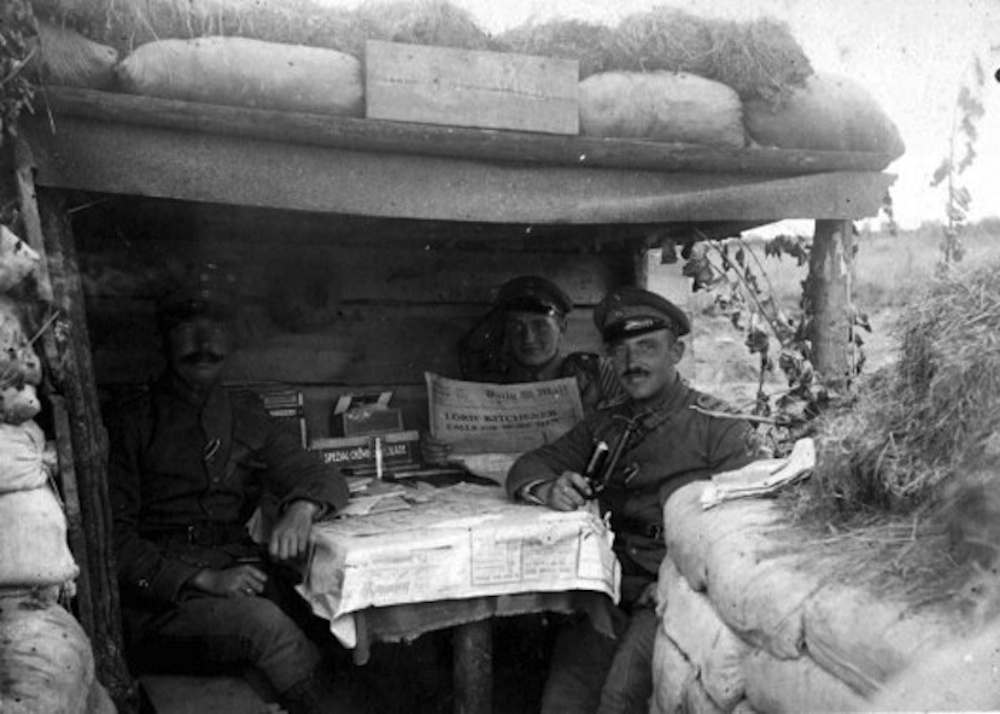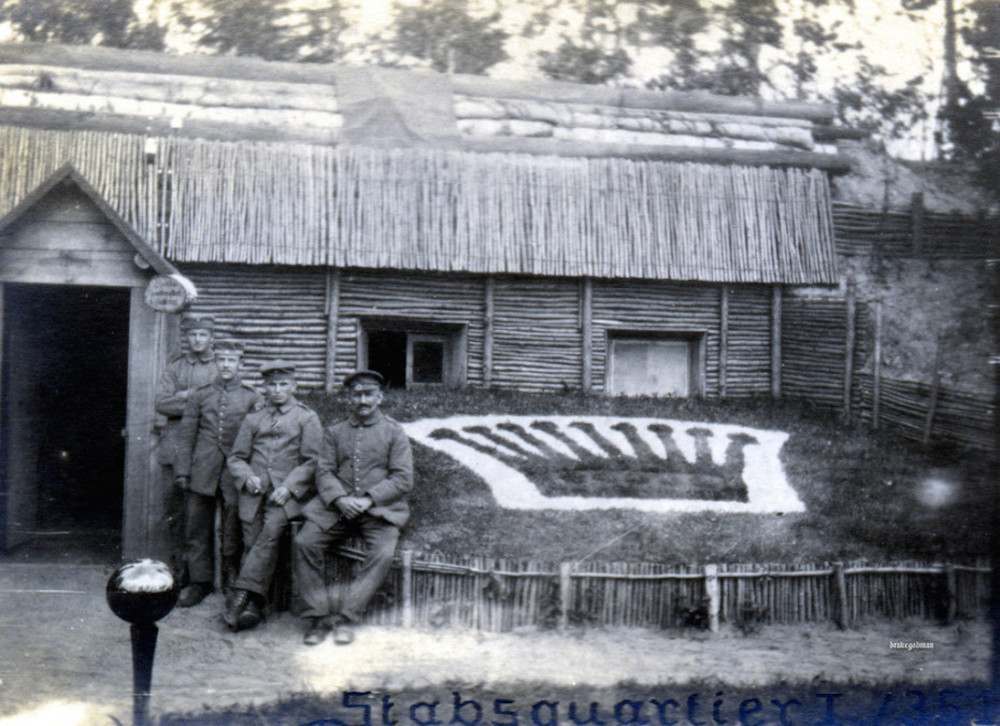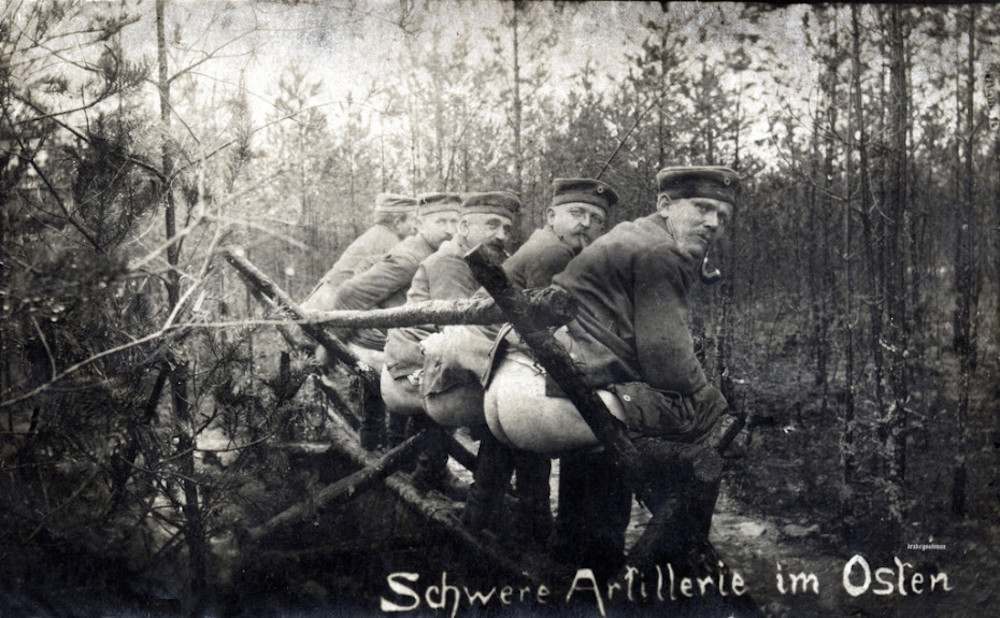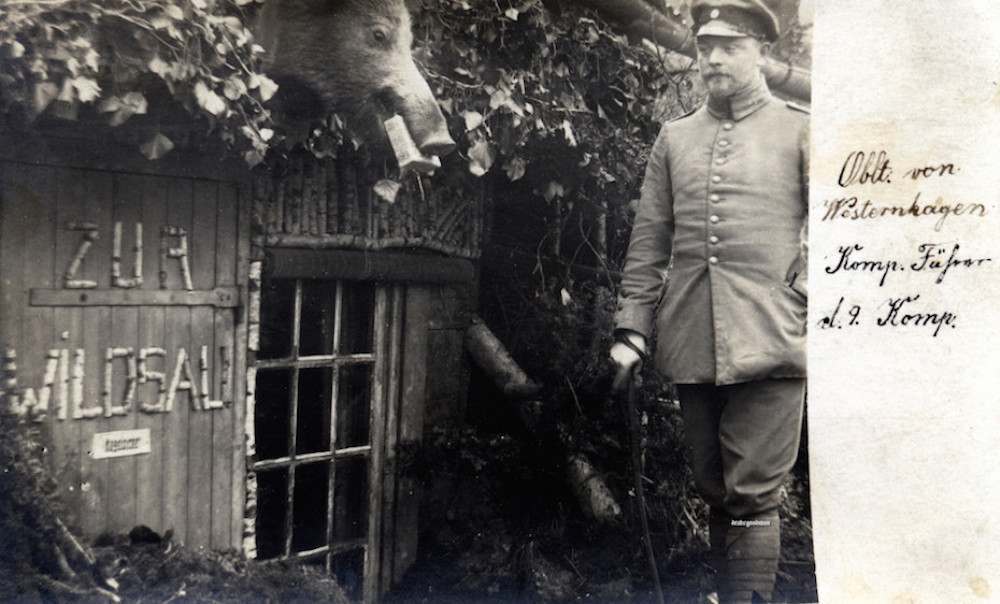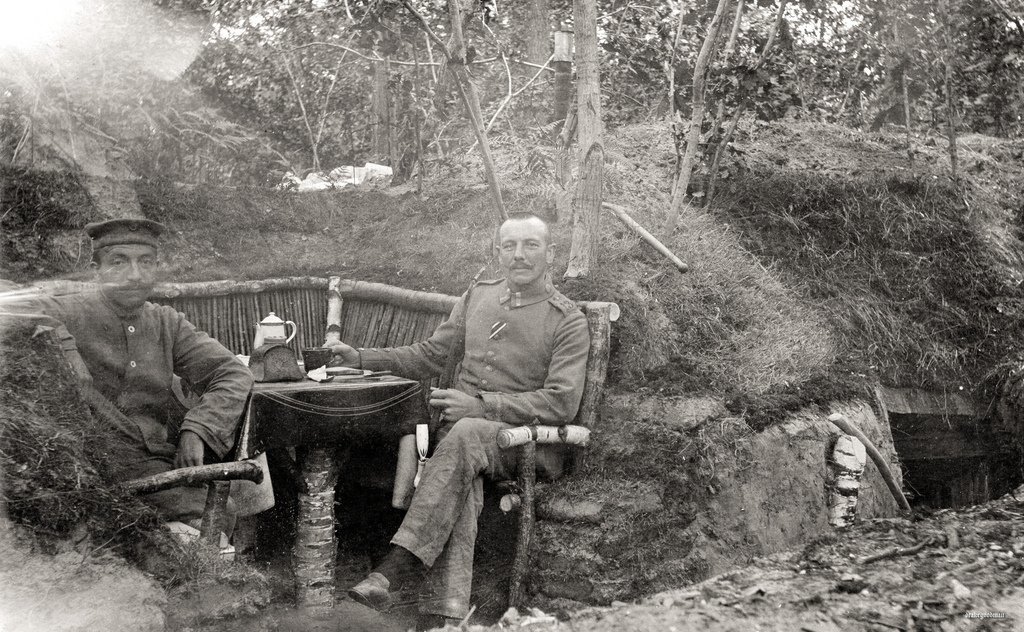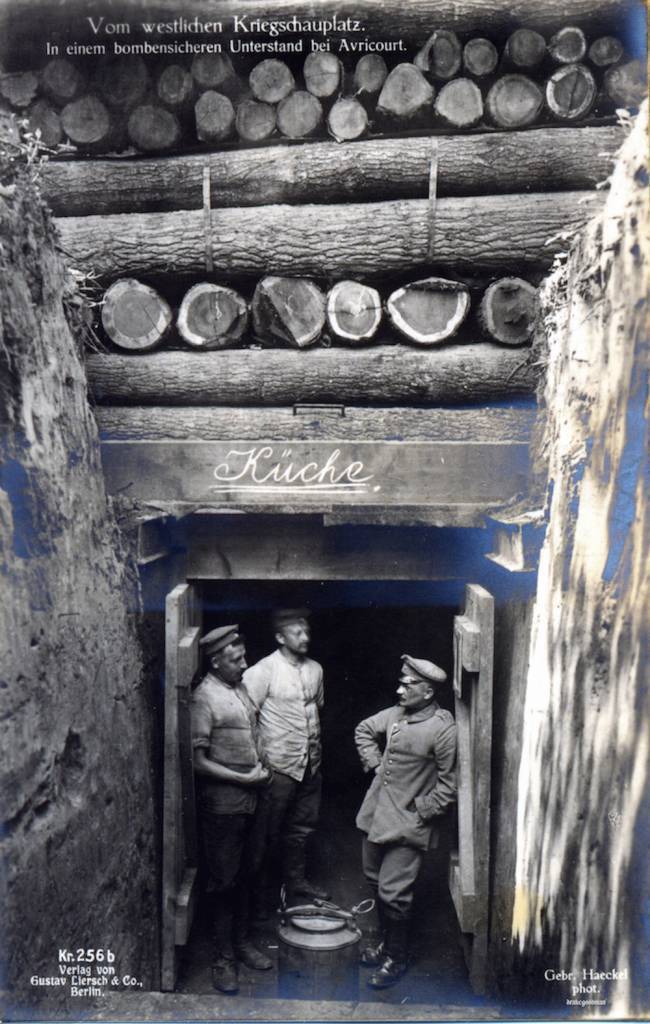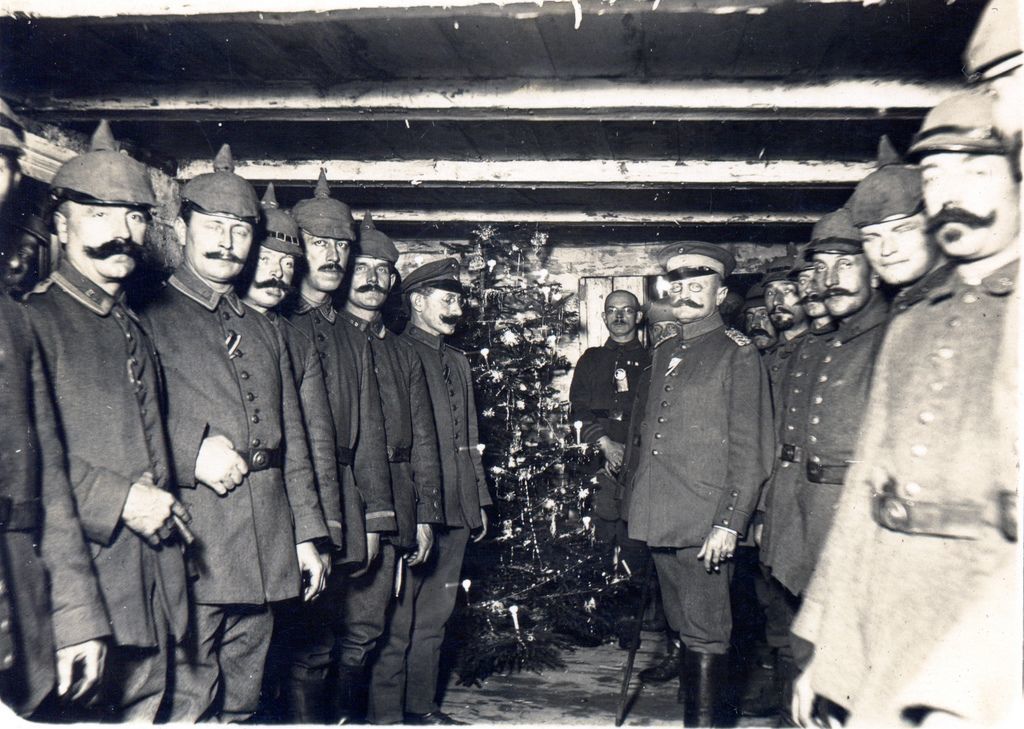Not all trenches in World War 1 were equal. Men strived to make a home in the hell, customising their dripping, roofed mud-gutters with flowers, pictures, bedrooms, kitchens and furniture.
We’ll look at some of these make-shift homes in the gallery below. Most pictures were taken for postcards sent home. They served as propaganda, of course, signs that life was not so bad – that even in the sodden Styx, hope floats.
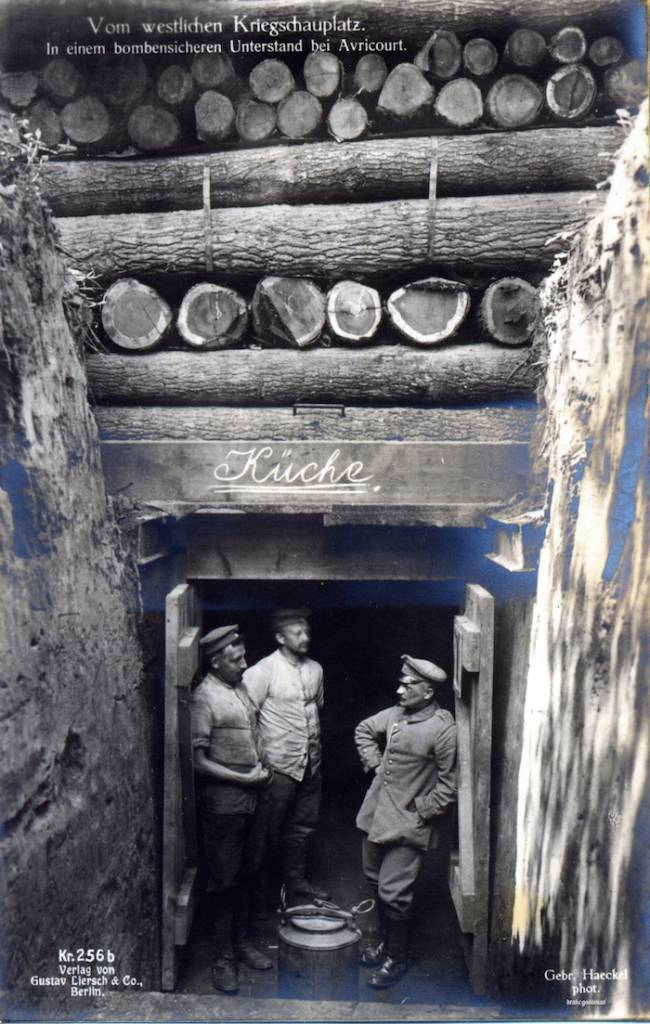
A popular commercial postcard printed and published by Verlag von Gustav Liersch & Co. of Berlin, taken near Avricourt, France. (c) Drake Goodman.
He thought how ‘Jack’, cold-footed, useless swine,
Had panicked down the trench that night the mine
Went up at Wicked Corner; how he’d tried
To get sent home, and how, at last, he died,
Blown to small bits. And no one seemed to care
Except that lonely woman with white hair.
Wilfred Owen, Hero

A Field Artillery Regiment communications bunker dubbed “Villa Georg” by it’s occupants. A field telephone can be seen close to hand as an artilleryman enjoys the sun with a good book and some bread. (c) Drake Goodman.
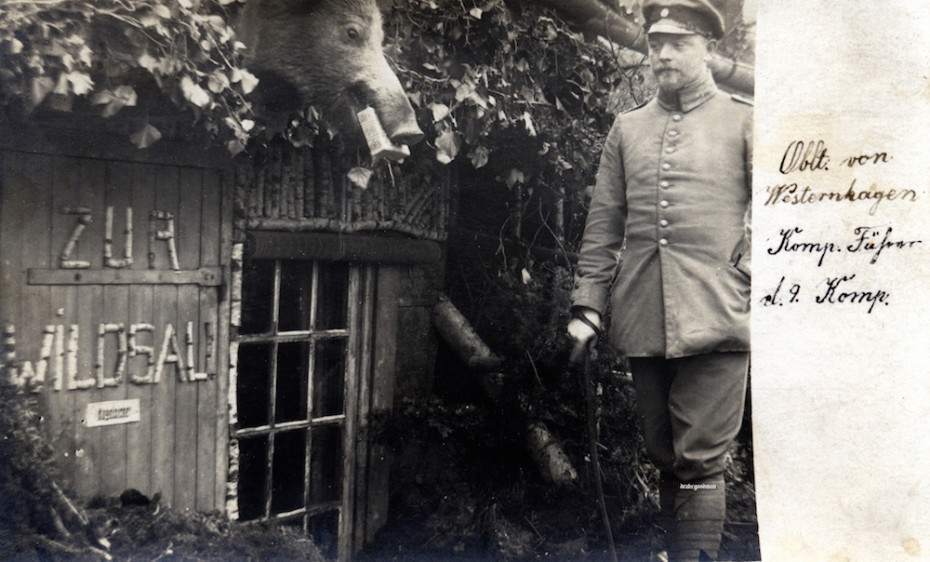
The company commander’s bullet-proof (“kugelsicher”) bunker or hut is called “Zur Wildsau” (the name of a pub “The Boar’s Head”) to match the stuffed wild boar’s or sow’s head above the entrance. Not sure what is stuck in the animal’s mouth. (c) Drake Goodman.
“No words can adequately describe the conditions. It’s not the Germans we’re fighting, but the weather. Within an hour of moving off, we were up to our knees in mud and water. The mud gradually got deeper as we advanced along the trench.
“To move forward, I had to use both elbows for leverage, one each side of the trench. After about one and a half hours of this, we reached the firing line. Later, I groped my way to our dugout. What a sight. Imagine a room underneath the ground, whose walls are slimy with moisture. The floor is a foot or more deep in rancid-smelling mud.” – Harry Drinkwater’s diary, Thursday, December 16, 1915

Men of Reserve Infanterie Regiment 31 mooch about in a small annex adjoining their dugout. Their digs have been spruced up with some items no doubt liberated from a ruined church or farmhouse. A stuffed pheasant sits on one corner of the shelter, decorated with piece of ornately carved timber, perhaps once part of the altar of a church. In the background we see a statue of the Madonna, from a graveyard? The author of the letter, Friedrich Sommer mentions a “big offensive”. He is referring to the Battle of the Somme. German-built by the 1st Company of Reserve Infantry Regiment 31. (c) Drake Goodman

Two postcards from 1. Landsturm Infanterie Bataillon ‘Rastatt’. Probably somewhere in the Vosges, circa 1917 or later. (c) Drake Goodman.
“The trenches are in a terrible condition — anything up to 4ft deep in mud and water. We’re plastered in mud up to our faces. Our food – cold bacon, bread and jam – is slung together in a sack that hangs from the dripping dugout roof. Consequently, we eat and drink mud” – Harry Drinkwater’s diary, Thursday, December 20, 1915
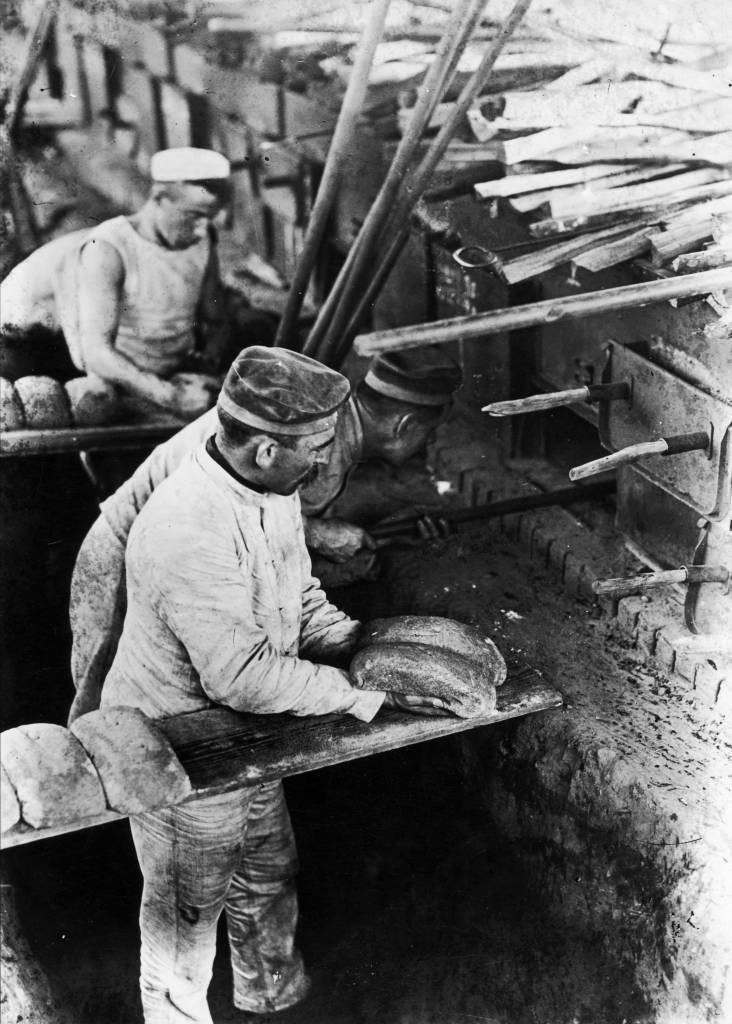
circa 1916: German soldiers making bread in ovens on the field. (Photo by Topical Press Agency/Getty Images)
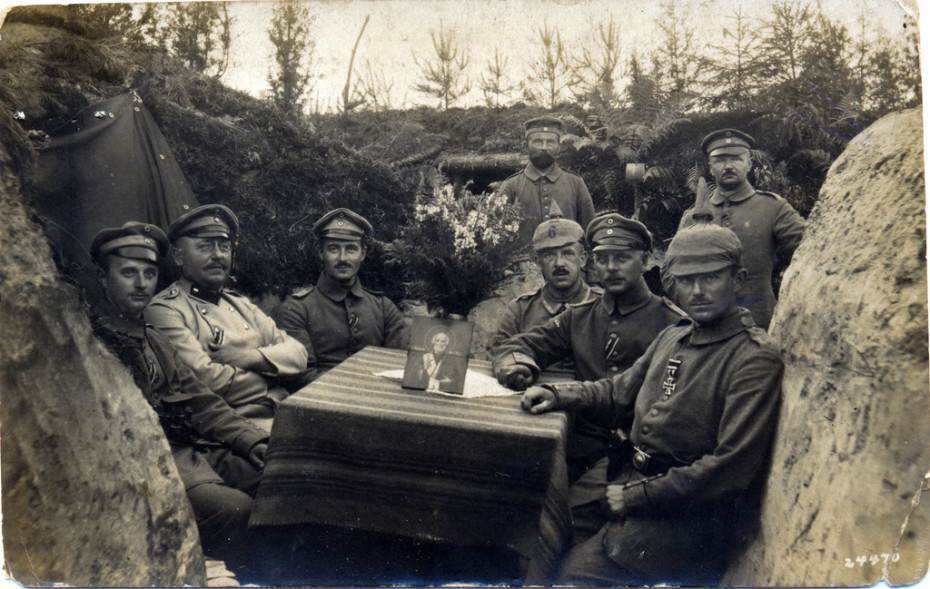
Landwehr Regiment Officers and NCOs seated around a table on which sits a portrait of a Saint Nicholas and a vase of flowers. Possibly a special occasion such as an award presentation, 1915. (c) Drake Goodman.

What war? All the comforts of home in a medical officer’s dugout. The elaborate “garden” is extraordinary, particularly the decorative snake and wicker sun chair. Location unknown, Maschinengewehr-Kompanie 1917.
The darkness crumbles away.
It is the same old druid Time as ever,
Only a live thing leaps my hand,
A queer sardonic rat,
As I pull the parapet’s poppy
To stick behind my ear.
- Break of Day in the Trenches, by Isaac Rosenberg
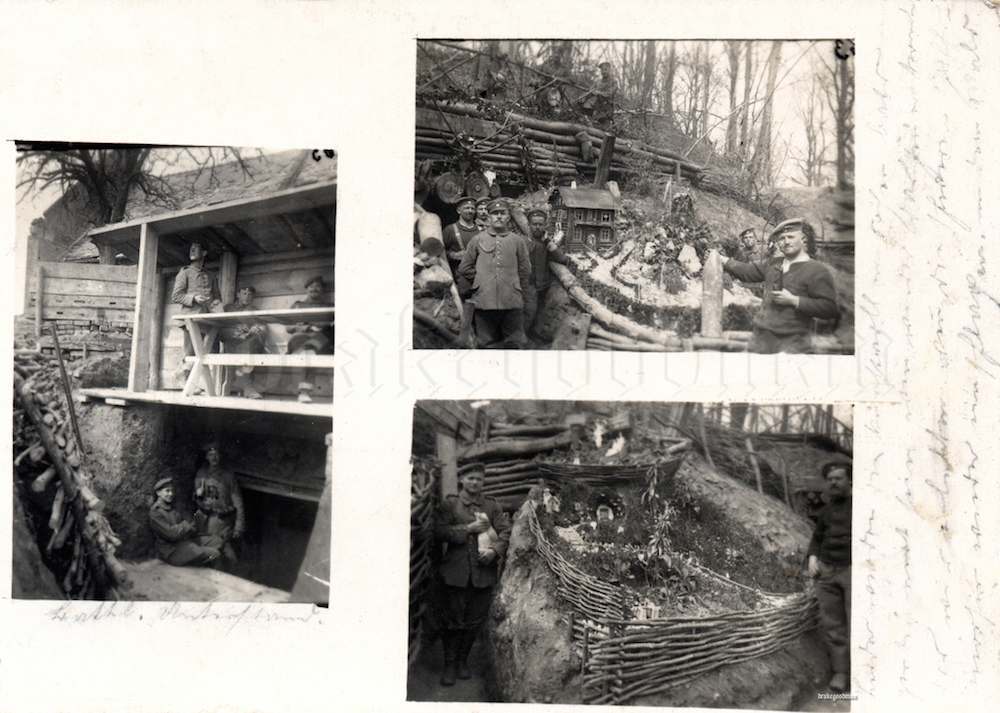
Lilliput and Blefuscu – decorated German lines. Divided reverse. Note on front generously translated by xiphophilos. Letter kindly translated by GenBerlin and uwing50, dated 23.7.1915 the sender asks his cousin for his opinion on how the war is progressing.
“Now what is your opinion about peace. I think that if the two forthcoming months do not bring success at Warsaw and Verdun and pending any other setbacks, then we will still be sitting in the trenches of France for the next year.”

Two postcards from 1. Landsturm Infanterie Bataillon ‘Rastatt’. Probably somewhere in the Vosges, circa 1917 or later
“Where we fought several times over the same ground bodies became incorporated in the material of the trenches themselves.’ He remembered in one place accidentally digging through corpses of Frenchmen killed and buried in 1915. They were putrid, with the consistency of Camembert cheese. I once fell and put my hand right through the belly of a man. It was days before I got the smell out of my nails” – Stuart Cloete, age 19, 1916
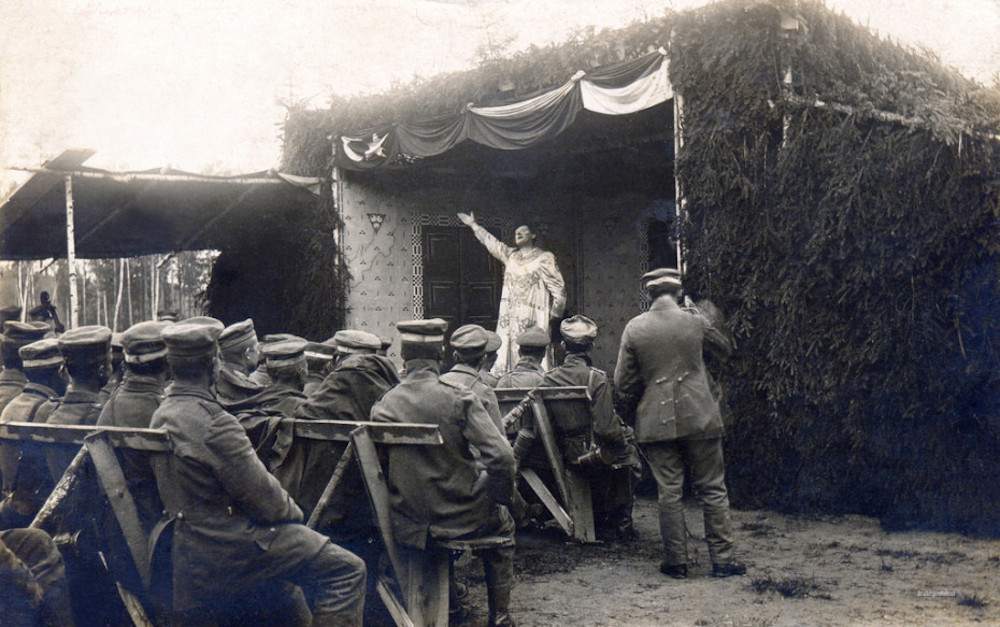
Pagliacci on the Eastern Front 1918. Letter on reverse dated 22.7.1918 with Einheitsstempel from Kgl. 11. Komp. Landw. Inf. Regt. Nr. 21. Landwehr infantrymen enjoying an outdoors performance by a mobile theatre company and military band. (c) Drake Goodman.
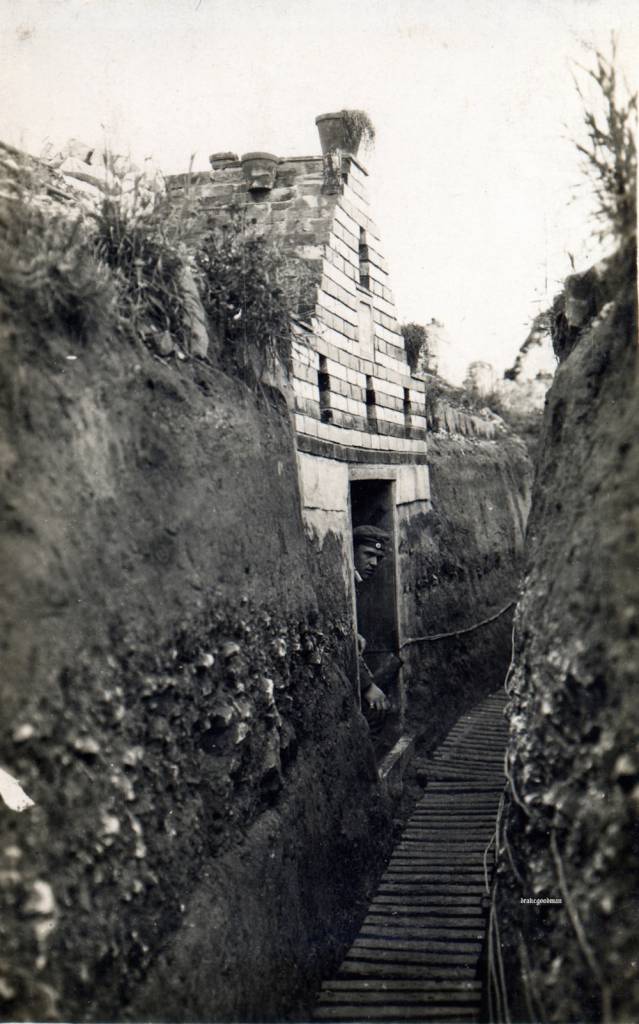
What looks like a German communication trench with phone wires running into the house. (c) Drake Goodman.
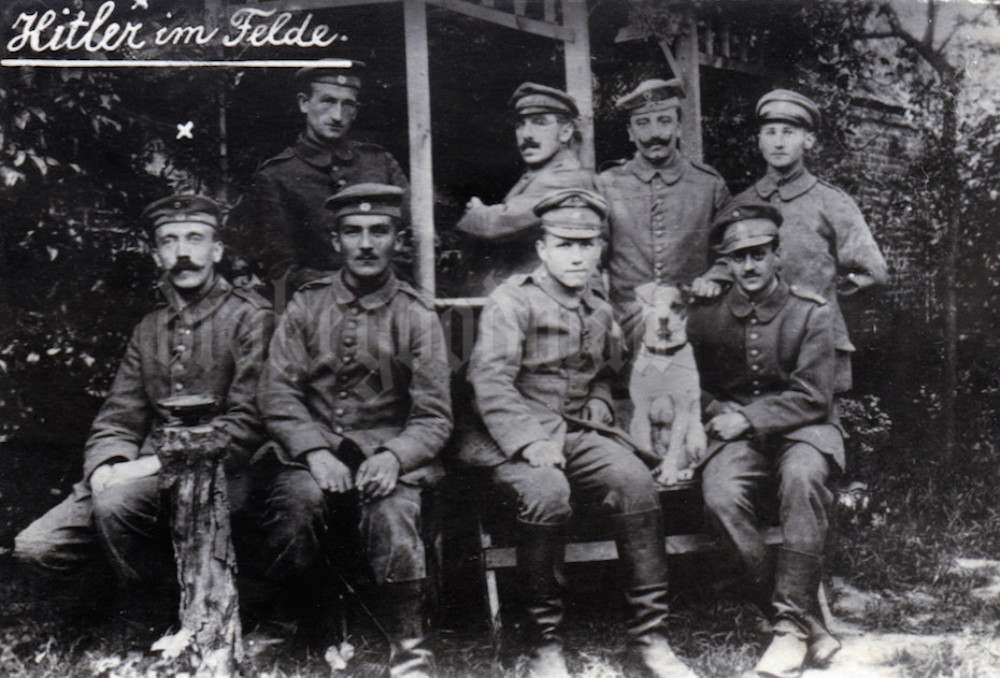
He is wearing the Iron Cross Second Class which he was awarded in 1914 and would later go on to receive the Iron Cross First Class in 1918, after being recommended by a German-Jewish Leutnant, Hugo Gutmann. (c) Drake Goodman.
I knew a simple soldier boy
Who grinned at life in empty joy,
Slept soundly through the lonesome dark,
And whistled early with the lark.
In winter trenches, cowed and glum,
With crumps and lice and lack of rum,
He put a bullet through his brain.
No one spoke of him again.
You smug-faced crowds with kindling eye
Who cheer when soldier lads march by,
Sneak home and pray you’ll never know
The hell where youth and laughter go.
Seigfried Sassoon, Suicide in the Trenches (1917)

The interior of an officer’s digs at Christmas time. No doubt well appointed by comparison with the lodgings of the men under his command. (c) Drake Goodman.
“Propped up against the wall were a dozen men, all gassed. Their colours were black, green and blue, tongues hanging out, eyes staring. One or two were dead and others beyond human aid; some were coughing up green froth from their lungs.” – Lance Sergeant Cotton, Northumberland Fusiliers, describing a gas attack
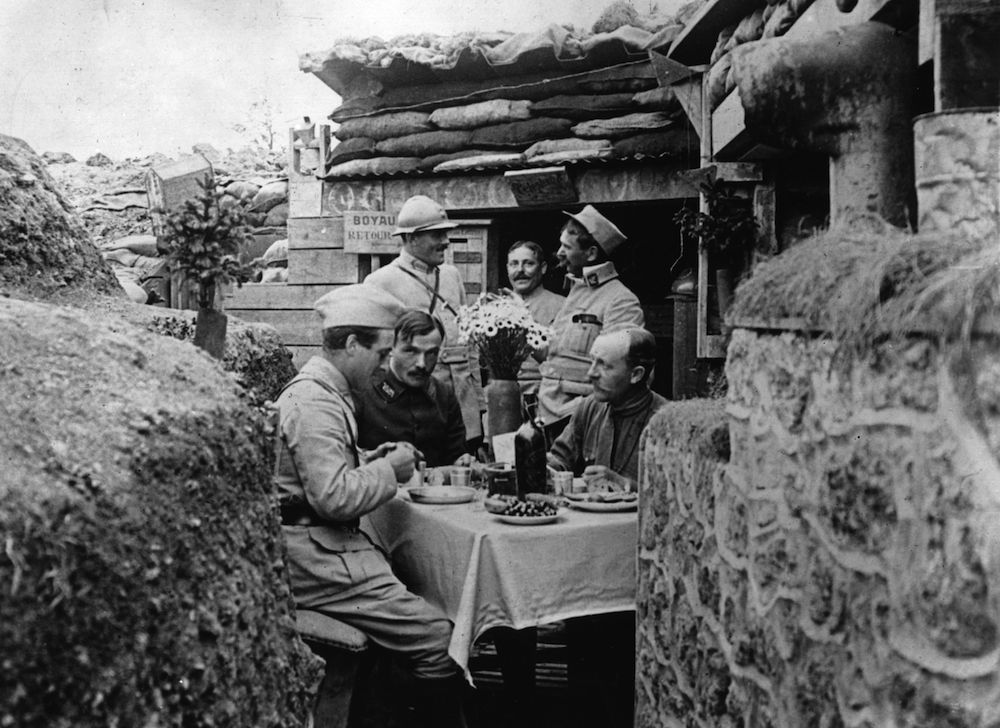
French officers dining in style in a trench near the front line. (Photo by Hulton Archive/Getty Images)
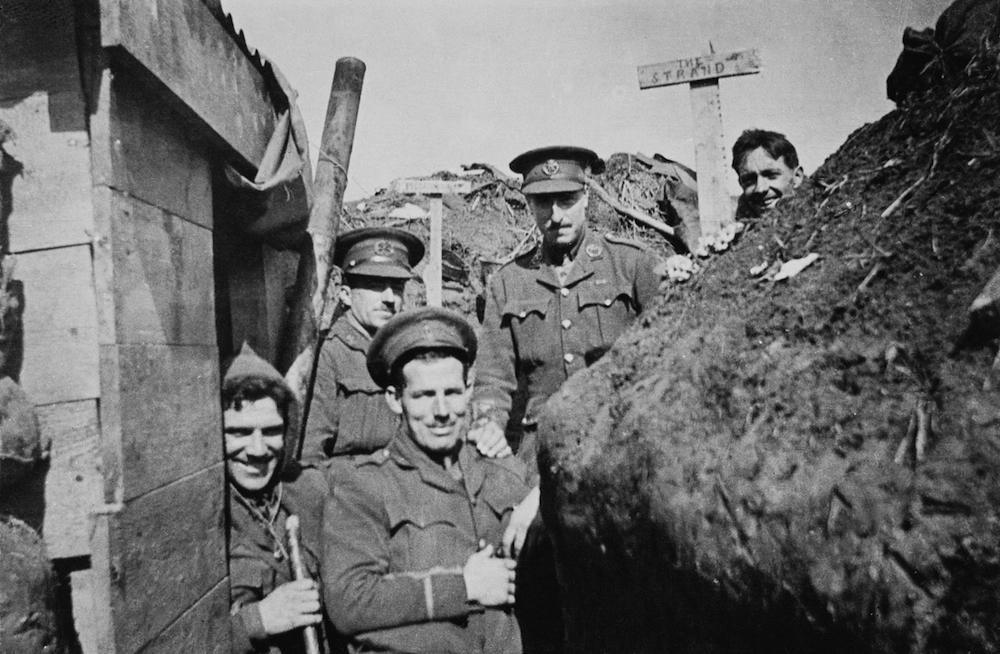
British officers in a trench, probably in Belgium, during World War I, circa 1915. The two signs behind them read ‘Piccadilly’ and ‘The Strand’. (Photo by Topical Press Agency/Hulton Archive/Getty Images)
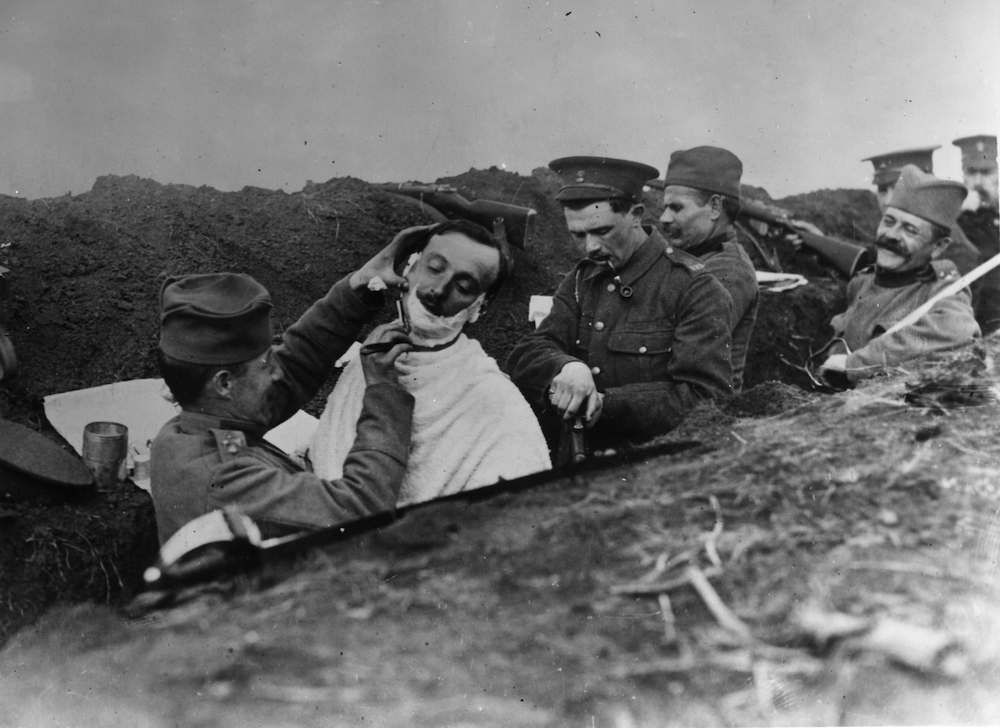
circa 1916: A Serbian soldier being shaved in a trench by one of his comrades. ‘Scenes with our Serbian allies.’ ‘La Toilet’ in a trench. (Photo by Topical Press Agency/Getty Images)
“To add to the general discomfort, the trenches were alive with rats. The knowledge that the gigantic trench rats had grown fat through feeding on the dead bodies in No Man’s Land made the soldiers hate them more fiercely than almost anything else.” – S. Case, The First World War, 1976

circa 1916: British soldiers sitting around a lamp in their trench. (Photo by Hulton Archive/Getty Images)

Three German soldiers display rats killed in their trench the previous night. (Photo by Faber/Getty Images)
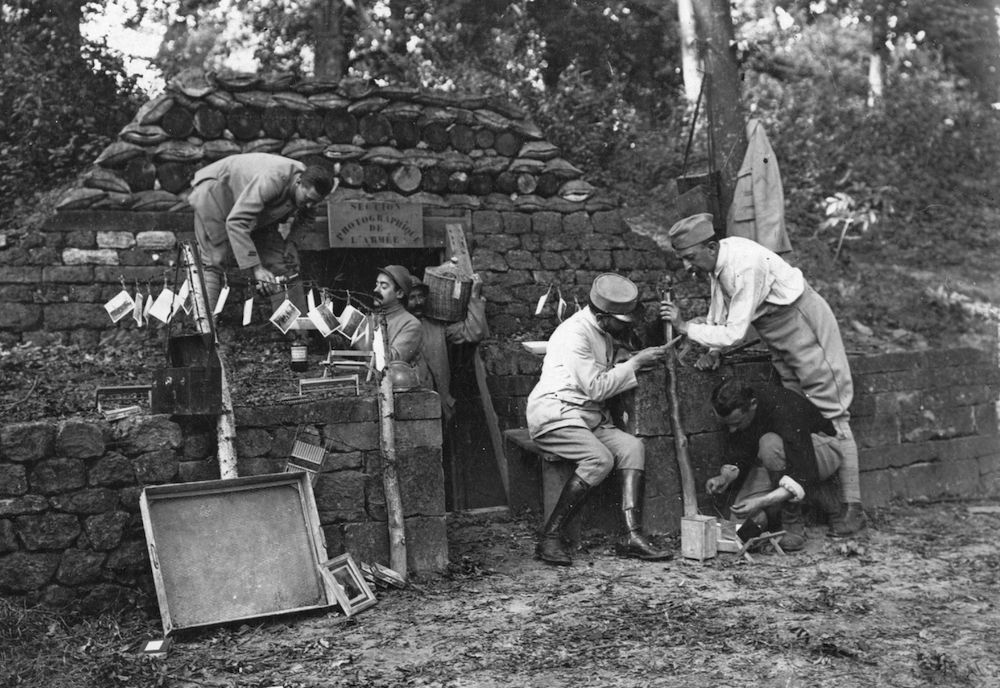
5th October 1917: The French photographic section in a dug out in the trenches in the l’Oise. Some photos are hung out to dry. (Photo by Henry Guttmann/Getty Images)
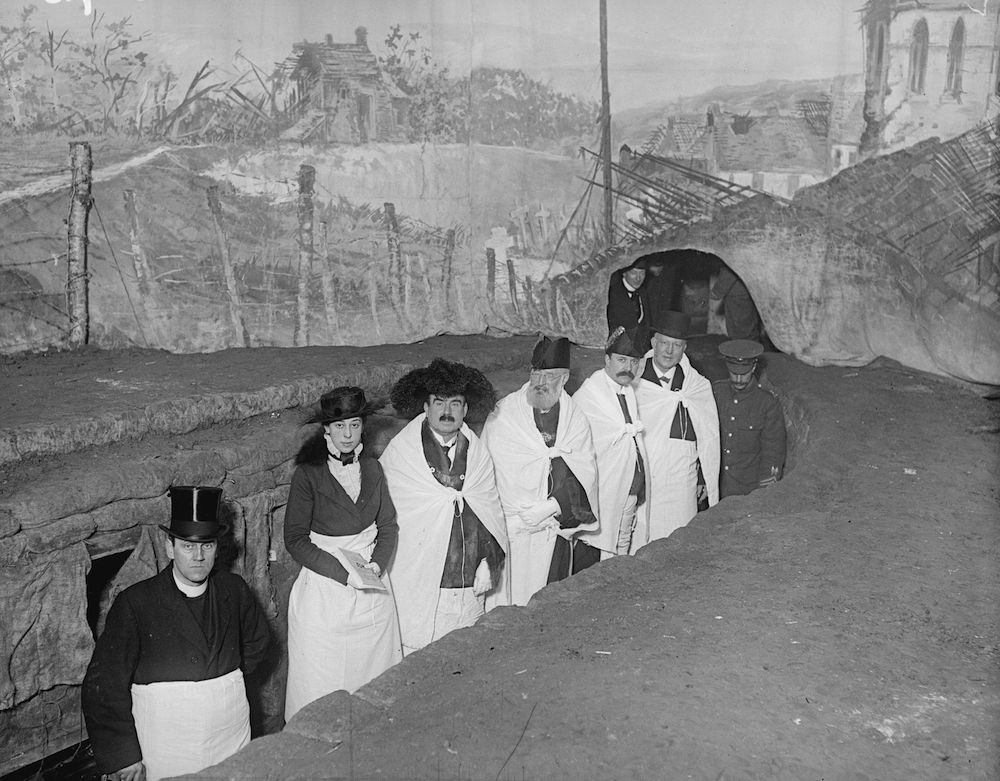
March 1916: The Lord Mayor of London and his officials visit the trenches constructed at an Active Service Exhibition held in Knightsbridge to inform the British public of conditions on the front during World War I. (Photo by Topical Press Agency/Getty Images)
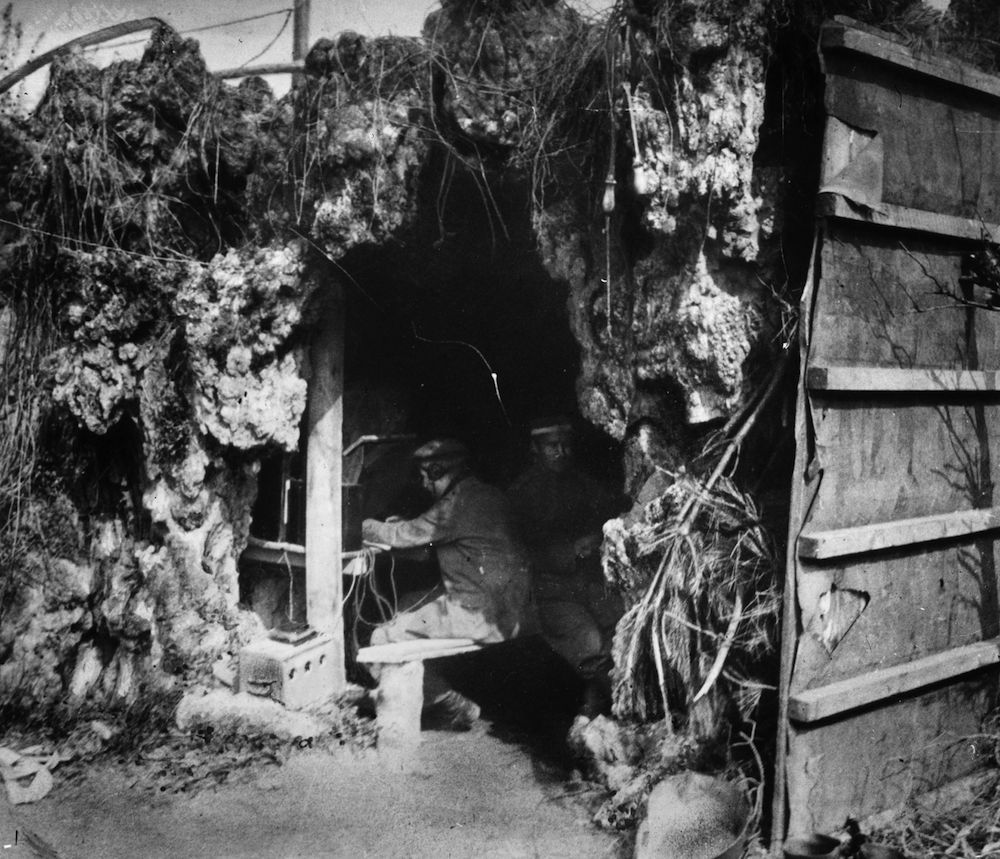
March 1918: German wireless operators in a dugout near Amiens. (Photo by General Photographic Agency/Getty Images)
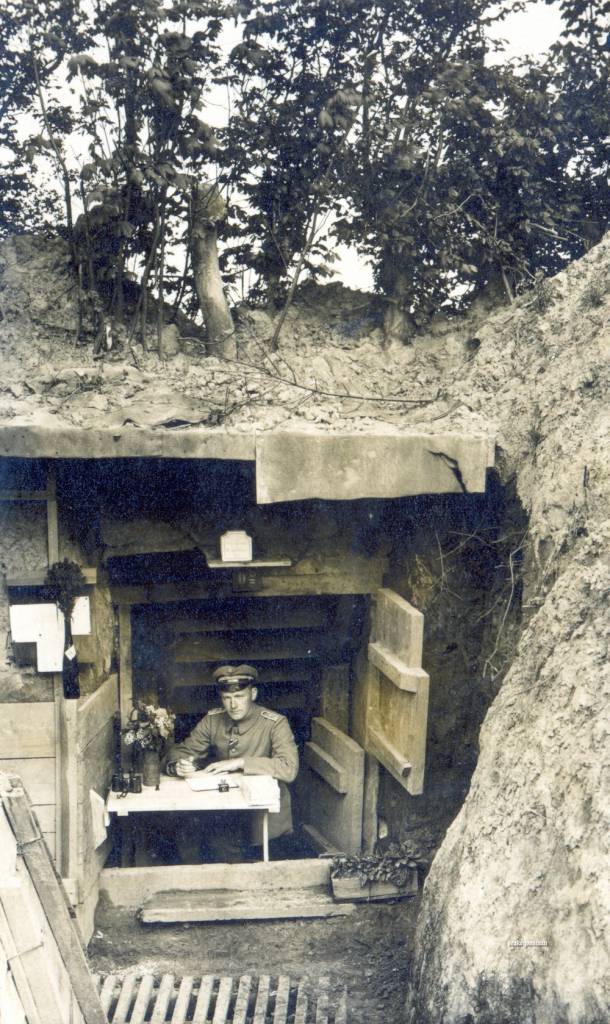
Commander of the 2nd Company, Kompagnie-Führer Hauptmann Rumpf seated outside his dugout in the German lines at Essart.
Via: Messy Nessy, Drake Goodman
Would you like to support Flashbak?
Please consider making a donation to our site. We don't want to rely on ads to bring you the best of visual culture. You can also support us by signing up to our Mailing List. And you can also follow us on Facebook, Instagram and Twitter. For great art and culture delivered to your door, visit our shop.
